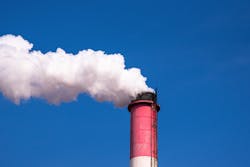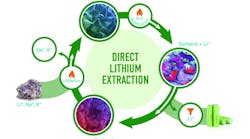U.S. energy-related CO2 emissions fell 1.7 percent in 2016
In 2016, U.S. carbon dioxide (CO2) emissions related to energy totaled 5,170 million metric tons (MMmt), after slipping 2.7 percent between 2014 and 2015, according to the U.S. Energy Information Administration (EIA). The recent decreases were consistent with a decade-long trend, with energy-related CO2 emissions falling 14 percent below the 2005 level in 2016.
U.S. energy-related carbon dioxide emissions in 2016 were below 2015 levels. Graphic courtesy of U.S. Energy Information Administration
China aims to fight pollution by cutting steel, coal capacity
China’s central planning agency, the National Development and Reform Commission (NDRC), announced its intention to cut steel capacity by 50 million tonnes and coal output by more than 150 million tonnes by year’s end, according to Reuters. The plan, announced at the opening of the annual meeting of parliament, is part of a years-long effort to reduce the share of coal in its energy supply to curb a heavy pollution problem and meet climate-change goals. The plain also aims to streamline over-supplied smoke-stack industries such as steel.
Growing global LNG trade could support market hub development in Asia
Asia accounts for three-quarters of global liquefied natural gas (LNG) trade and one-third of total global natural gas trade, according to the EIA. Despite being the world’s largest consumer of LNG, Asia lacks a pricing benchmark that can reliably reflect supply and demand changes in the country’s natural gas markets.
Currently, no location in Asia has sufficiently developed physical infrastructure or regulatory frameworks to accommodate the creation of a natural gas trading hub, but the governments of Japan, China and Singapore are each exploring the possibility of establishing an LNG market hub.
US coal production increases during second half of 2016
Coal production rose in the third and fourth quarters of 2016 after falling in six out of the previous seven quarters from mid-2014 to mid-2016, according to the EIA. The Powder River Basin in Montana and Wyoming saw the largest increases among coal supply regions during the second half of 2016. An increase in coal-fired electricity generation during an increase in natural gas prices drove the coal production increases.
U.S. wind generating capacity surpasses hydro capacity at the end of 2016
Conventional hydroelectric generating capacity, the nation’s largest source of renewable electricity, was eclipsed by installed wind electricity in 2016 after 8,727 megawatts of new wind capacity came online last year. But the trend isn’t expected to last long. The hydro fleet’s higher average capacity factors and above-normal precipitation on the West Coast experienced so far this year will likely cause hydroelectricity to surpass wind generation in 2017, the EIA reported.
Brazil has the third-largest electricity sector in the Americas
The third-highest amount of electricity in the Americas — behind the U.S. and Canada — is generated by Brazil. Last year, Brazil had an installed generating capacity of 137 gigawatts and generated 560 billion kilowatt hours of electricity, according to the EIA.
Maryland increases renewable portfolio standard target to 25 percent by 2020
Maryland upped the renewables generation target in its renewable portfolio standard (RPS) from 20 percent of retail energy sales by 2022 to 25 percent by 2020, according to EIA. The change occurred in February, as legislators in both houses of Maryland’s General Assembly voted to override the governor’s veto of legislation first passed in 2016.
Record precipitation, snowpack in California to impact hydro generation
California’s drought is significantly weakening for the first time since 2011 thanks to one of the wettest winters on record, according to the EIA. The state received record levels of precipitation this winter, and unlike last winter, cooler temperatures during the 2016–2017 winter season have enabled the precipitation to build up snowpack. High precipitation and snowpack levels supply hydroelectric generators throughout the year and suggest that hydroelectric generation in California in 2017 will considerably exceed 2016 levels.



